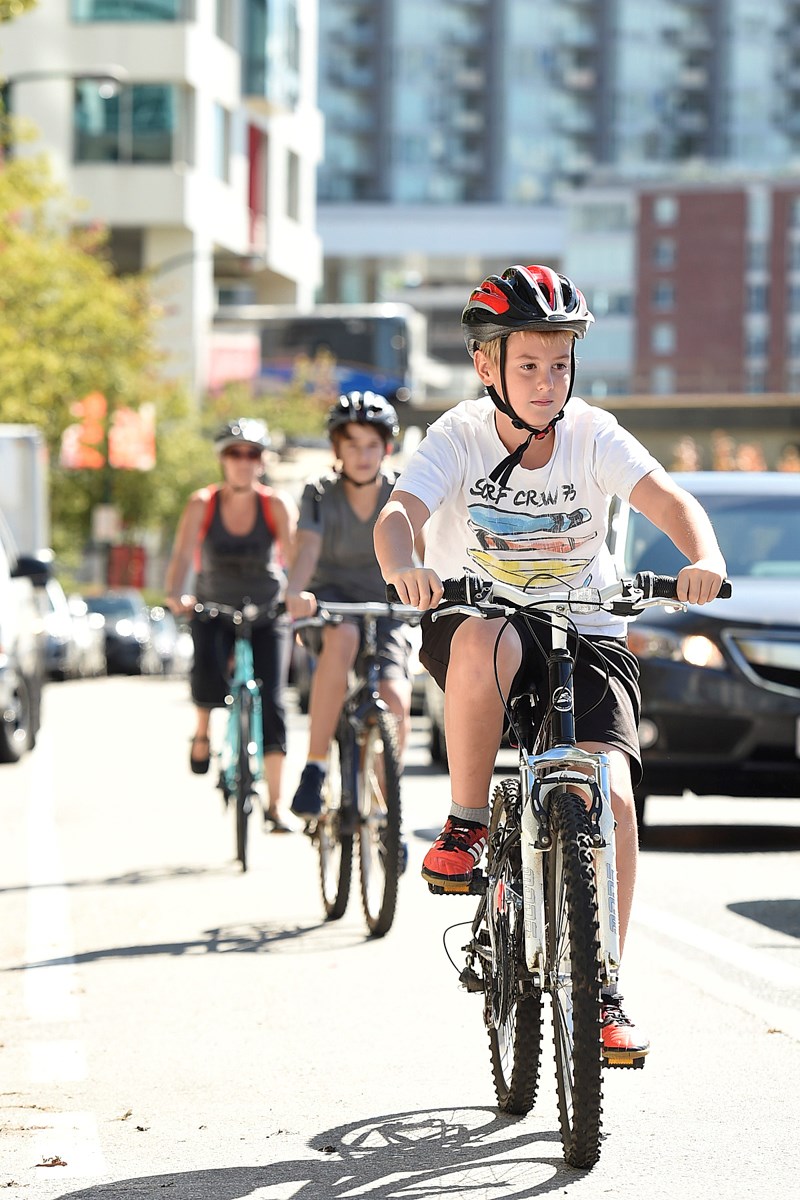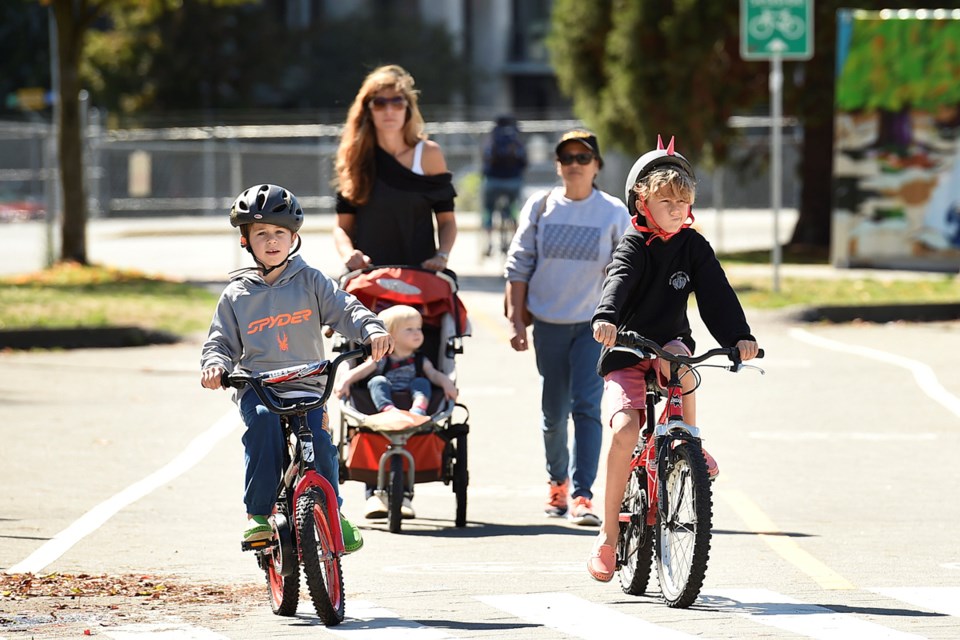School is back in session for thousands of students throughout Â鶹´«Ă˝Ół»and it’s time to return to a daily routine for the next 10 months, including the trip to and from school.
Autumn is around the corner but that doesn’t mean children’s bikes should be put away in storage. In fact, building healthy, active habits into a child’s regular travel plan is a simple and easy way to meet the daily recommended physical activity for all school-aged children.
According to , elementary and high school children should get a minimum of 60 minutes of physical activity a day. In B.C., the ministry of education requires at least 30 minutes daily, which is supposed to be built into physical education.
By switching their mode of travel from the automobile to active transportation — whether by foot, bike, scooter or other people-powered means — kids can easily reach that 60 minute requirement.
Most children and teens live close enough to school to get there by walking 15 to 20 minute or cycling less than 10 minutes, said Charlotte Watson from (Hub for Active School Travel), an organization working with B.C. schools to develop active transportation plans.
“Majority of students in English or mainstream programs for 2015 lived within 1.6 kilometres of the school,” she said.
While high school kids often have longer distances to travel, active transportation is not an unrealistic option. For our children, they have the choice between four high schools, all of them are less than 2.5 kilometres from our front door.
Watson and the HASTe team work with school administrations, parents, Translink and municipal governments to identify deterrents to active transportation. Each year they work with up to six elementary schools to encourage a move from car travel and they track improvements to apply in the future.
“School travel planning aims to decrease the number of car trips and increase the number of children walking and wheeling to and from school, resulting in improved safety for students as a result of reduced congestion,” said Watson.
By making travel safer and encouraging active travel, student not only have the opportunity to meet daily physical activity levels, but also, in general, are healthier, with less chance of being overweight or obese. These continued habits built while they are young carry great benefits into adulthood.
The benefits are no joke. But the risks are most definitely not a laughing matter.
“The health benefits of physical activity largely accrue over the life course and influence risk of chronic diseases such as heart disease, diabetes, stroke, certain cancers, dementia and depression,” said Kay Teschke, a professor at U.B.C.’s School of Population and Public Health.
HUB, the region’s cycling advocacy organization, offers in-school bike education programs for Grades 3 to 10 to increase knowledge and confidence for students.
Biking to school can be seen as a reward for children because it grants them independence said HUB’s Erin O’Melinn.
“Cycling is transportation plus fitness plus freedom for kids,” she said.
That freedom is arguably most crucial. By encouraging children to walk or bike to school, parents are developing a sense of independence and responsibility early on.
Since day one, each of our kids has walked, biked or scooted to school. One of us makes the trip with them, and they are not only aware of the route to get there but also how to manage dangerous intersections and travel safely.
Making the same trip by car every day would have shielded them from the outside world, never fully understanding the route travelled, let alone how to get there safely and independently.
Because of our continued active travel to school, this year we will begin letting our children make the trip on their own. We feel safe in the knowledge that after years of making the same trek day in and day out, they will be able to navigate the route safely and with confidence.
Melissa Bruntlett is a co-founder of Modacity and is inspired to live a happy life of urban mobility. Reach her at [email protected].
Ěý
Tips for cycling tripsĚý

Walking, cycling or any other people-powered travel is a fairly easy habit to build. The activity keeps kids healthy and reduces the number of parents dropping off children by car, which makes the trip safer for all travellers and the school zone less congested.
Most significantly, the independence and responsibility gained over time ensures children will be set up for success when they begin making that trip on their own.
Consider these three suggestions from Active for Life.
1. Maintain your child’s bike
Make sure your child’s bicycle is mechanically sound by checking brakes and tire pressure. Check it regularly and invest in regular maintenance if you don’t have the skills yourself.
Check the bike seat stays at the correct height as your child grows over the course of the year.
Add a bell. Add a rear and front light as well as reflectors.
Make sure they have a decent combination lock or that you have a back-up key.
2. Introduce a helmet habit
Safe cycling starts with ensuring your child has a properly fitting helmet in good condition. Check for visible damage, like cracks or worn straps. Be clear with your children about how their helmet should fit, which is right on top of their head not too far forward or back.
Their helmet should be stored out of the sun and rain, as the elements can degrade the shock-absorbing foam. This means their helmet should be hung up indoors, not on their bike’s handlebars.
Bicycle helmets are not designed for multiple crashes and should be replaced after any impact. Encourage kids to speak up if their helmets have been accidentally dropped on the ground or if they’ve fallen off their bikes.
3. Plan (and practise) your route
When planning a child’s school commute, look for well-lit streets with designated bike paths or streets with less traffic. Intersections and driveways should be approached with caution.
Point out places along the route where children can stop if there is a problem. This could be a neighbour’s house, library or other public place where they can shelter if the weather turns stormy, they have a mechanical problem with their bike, or if they are too tired to keep riding.
Pack a change of clothes to leave at school, just in case the rider is caught in bad weather.Ěý
Finally, practise the route with them. Assess if they are ready to do it alone or with a group of friends.



